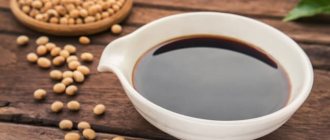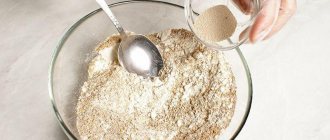general information
In order to fully understand the value of salt and soy sauce, it is necessary to refer to the history of these products.
It is known to have been used in ancient times BC . The first large salt production workshops were found in Western and South-West Asia, as well as Europe, on the coast of what is now Bulgaria. Even then, salt was highly valued by people and was expensive. Today, salt, as an additive that can improve taste, is used in every dish.
Soy sauce
It was first invented in ancient China , then it took a strong place in the hearts of Europeans. And only 15 years ago, when Chinese food began to enjoy well-deserved popularity in Russia, consumers tried a dark liquid that, like a magic potion, transformed many dishes.

Classic composition of “black gold”
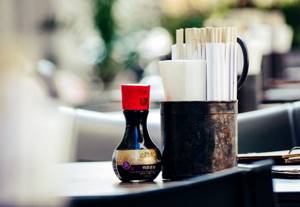
The seasoning is made from water, soybeans, salt and wheat, without foreign inclusions or additives. Wheat and bean grains are fried until dark, and a special fungus is added to them. After three days, along with salt, the dry extract is placed in fermentation containers. The process of slow natural fermentation begins, lasting from 5 to 12 months.
The finished mass is filtered and bottled. Glass containers retain the rich taste and characteristic aroma of the sauce well for a long time. This type of product is expensive, but has a high-quality ECO composition.
Useful qualities of salt
There are many types of salt: table, kosher, rock, black, sea, etc. All these types are different in texture, color and taste, only the difference in composition is the same: sodium and chlorine. Both of these microelements are necessary for the human body to function normally . The first ensures acid-base balance, organizes muscle function and transmits nerve impulses, while the second helps the stomach work and the body absorb food.

In addition to these beneficial qualities, salt has a number of other advantages:
- antiseptic properties are very weak, but they are still present. That is why this product is often used in canning, which allows food to be stored for a long time and not go to waste.
- Promotes activation of salivation , thus aiding thorough digestion of food. In addition, trace elements of salt are even found in pancreatic juice.
- cellular energy metabolism is maintained at the proper level in the human body .
- Proper regulation of fluid , dilution of lymph and blood is also the merit of salt.
- Salt is responsible for regulating blood pressure .
Health benefits of soy sauce
With the advent of fashion for Chinese cuisine in Russia, soy sauce has become indispensable in dishes such as sushi and rolls. It soon became clear that this innovation could decorate other foods, making their taste brighter and richer . A number of nutritionists advise people who want to lose weight to use soy sauce, because 100 grams of this product contains only 55 calories , and it also does not contain cholesterol, which is suitable for people with heart disease.
In addition to these advantages, there are a number of useful properties that soy sauce has:
- Contains a large amount of vitamins, minerals, amino acids that can slow down the aging of body cells.
- Improves hemodynamics (blood circulation), which in turn reduces the risk of cardiovascular diseases.
- Prevents the occurrence of cancerous tumors.
- Helps cleanse the liver of harmful substances.
- Strengthens blood vessels , making them stronger and more elastic.
- Relieves headaches and migraines.
- Improves the functioning of the gastrointestinal tract.
- Prevents the occurrence of destructive changes in the brain and improves the functioning of the nervous system.
- Increases the production of serotonin (the hormone of happiness).
- Destroys insomnia.
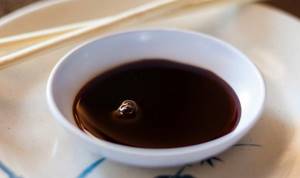
How to replace soy sauce: healthy and safe recipes
Since it is quite difficult to find fermented soy sauce in stores, some doctors advise patients with severe pancreatitis to look for alternative food dressings. Milk-based sauces are recommended for patients.
A good substitute for classic bechamel soy dressing. Ingredients:
- 2 tbsp. wheat flour,
- 750 ml milk,
- 50 g butter,
- salt and sugar to taste.
It's quite simple to prepare:
- Mix flour with melted butter and fry in a frying pan.
- Pour in the milk slowly, while stirring thoroughly.
- After boiling, cook for 10-15 minutes, and then add salt and sugar.
Sometimes, instead of various marinades, it is useful to season dishes with tomato paste. It is advisable to prepare the pasta yourself by grinding tomatoes and herbs through a meat grinder. Choose non-acidic varieties of tomatoes.
Olive oil is a great sauce substitute. They are good for dressing salads and vegetable dishes.
Product contraindications
You won't be able to refuse this product at all. Nutritionists say that some amount of salt is contained in almost any product (cheese, sausage, canned fish, tomatoes, cucumbers, including canned ones). The daily intake ranges from 3 to 10 grams per day per person. But most often a person abuses this product, which causes health problems:
- Deterioration of kidney and heart function.
- Metabolic disorders, due to which the patient will quickly gain unnecessary weight.
- Impaired functioning of the gallbladder, pancreas and liver.
- Development of hypertension.
Soy sauce
You should also be careful with soy sauce, since it also contains salt . The daily norm that you need to adhere to is a couple of tablespoons per day . Despite the impressive list of advantages, there is no guarantee that the use of this product will not have a negative effect on the body of a healthy person. Here are a few specific contraindications:
- Soy sauce is contraindicated for pregnant women . It contains isoflavonoids, which are similar in composition to female sex hormones and negatively affect the development of the fetus and its gestation.
- Nutritionists do not advise children under 14 years of age , because an increased level of soy in the body will lead to problems with the thyroid gland.
The best manufacturers
A reliable brand is one that makes not only a tasty, but also an environmentally friendly, safe product. Often asking the question “Which company is better to choose?” Among all the available manufacturers, we want to find one that puts quality ingredients into their products and adheres to traditional recipes. The products of which are made on modern equipment, in accordance with international quality standards.
We made a detailed analysis of the market for Asian seasoning manufacturers, analyzed user reviews, and compiled a list of the best.
- Chin-Su is a brand of the Vietnamese company Masan Group. It produces various sauces - fish, soy, chili.
- Cholimex Food is a Vietnamese company established in the early 80s. Produces Asian flavoring additives. The company's factories are equipped with modern equipment; products are supplied to countries in Asia, America and Europe.
- Heinz is a food company from the USA, a famous manufacturer of ketchup. The company's product range also includes: baby food, sauces, soups, pickles, frozen foods.
- Kikkoman is a Japanese international food company that has been around for over a century. The range of products includes soy sauce, various seasonings, traditional Japanese alcoholic drinks - mirin, shochu, sake, juices. The company also produces medicines and services restaurants. Kikkoman soy sauce is the most popular in Japan, USA, and Russia.
- Pearl River Bridge is a Chinese company established in 1958. The most famous manufacturer of sauces in the Middle Kingdom. The company's product range includes traditional Chinese and Japanese seasonings.
- Sempio is a food company from Korea that produces soy sauce and paste, tea, noodles, canned food, and seafood.
- Sen Soy (“Sen Soy”) is the leading brand of Russian. This company is the owner of the only Russian plant where soy sauce is made using natural fermentation. The company also produces sushi products - seaweed, rice, ginger, vinegar. Produces many types of noodles, funchose, ready-made meals, tomato and mayonnaise sauces, syrups.
- TaoTao is a Thai brand that produces all kinds of seasonings, canned food, and pasta.
- Yamasa is a Japanese company with a long history. The company was founded in 1645 and produces soy and sesame sauces.
According to Roskontrol, Doshirak and Tai-So are not reliable manufacturers.
Both companies add ingredients that are not typical for the classic recipe, too many additives. Aspartame was found in Doshirak sauce, and saccharin was found in the Tai-So product from Empire of Flavors, which was not printed on the label. In both samples, protein levels were below normal.
Which product is better to use?
Both of these products are beneficial only in moderation , but are harmful to people suffering from specific cardiovascular diseases, as well as kidney or stomach diseases. Based on this, you can understand that there is no point in replacing soy sauce with salt. It is best to consult a doctor . Only a nutritionist, based on the characteristics of the human body, prescribes the appropriate diet and necessary treatment.
However, there are several general recommendations that will help people reduce the load on the body and not deny themselves anything:
- Reducing the daily consumption of seasoning will help a person maintain the functioning of various body systems at the proper level.
- Good quality soy sauce is expensive . When choosing between its cheap analogue and salt, you should choose to use the second product in moderation.
- You should diversify your daily diet and consume different foods in different quantities. Then the body will stop demanding the missing vitamins.
- It is worth reducing the use of spices, herbs and salt . Over time, the natural taste of food will become richer and more enjoyable.
Chinese or Japanese? Spicy or mild?

Product manufacturers are gradually transforming and transforming the recipe, adjusting it to the various selection criteria of their consumers. The sauce in Asian cuisine has many options:
- Japanese - made only from soybeans;
- spicy – with red or black pepper;
- sweet – dark, with the addition of caramel;
- Gluten-free – for people with grain intolerance.
Natural seasoning is low-calorie, contains essential amino acids, saturated and unsaturated fatty acids, a small amount of sugar, as well as mineral components:
- antioxidants;
- flavonoids;
- zinc;
- vitamins B and C.
| NUTRIENT | QUANTITY (MG) |
| Vitamin B1 | 0.03 |
| Vitamin B2 | 0.17 |
| Vitamin B6 | 18.3 |
| Vitamin PP | 2.2 |
| MICROELEMENTS | |
| Iron | 1.56 |
| Copper (µg) | 43 |
| Zinc | 0.87 |
| Manganese | 1.02 |
| MACROELEMENTS | |
| Sodium | 5493 |
| Potassium | 435 |
| Calcium | 33 |
| Phosphorus | 166 |
| Sulfur | 81.4 |
Advantages and disadvantages of soy sauce

- Reduces the risk of tumor processes.
- Slows down aging. Due to the fact that fermentation in the sauce occurs naturally, the product slows down the oxidation processes taking place in the cells. According to scientific research, due to the content of a large number of amino acids and minerals, the product can slow down aging tens of times more effectively than products containing vitamin C or red wine.
- Improves blood circulation and prevents problems with the heart or blood vessels.
- The product is not recommended for use by children under 14 years of age, as high soy content in the diet can cause thyroid dysfunction.
- Soy sauce should not be consumed by pregnant women. It contains isoflavonoids. Their composition is similar to estrogens, hormones that are found in the female body, so soy sauce can affect the development of the embryo.
- Only natural sauce will bring benefits to the body. If you come across a counterfeit product in a store, then regularly consuming a low-quality product can have a negative impact on your health.
Where to buy and how to choose
Finding soy sauce is not difficult, it is available in many grocery stores and supermarkets, but choosing a quality natural product is not so easy.
Read the label carefully before purchasing soy sauce. The composition should not contain E220 (sulfur dioxide) or E200 (sorbic acid), vinegar, yeast, sugar or anise, or preservatives.
Real soy sauce is made from wheat, soybeans and salt. The percentage of protein should not be less than 7%. Dark Chinese soy sauces also contain sugar.
- The label should indicate “naturally fermented.”
- Low-quality soy sauces produced by chemical hydrolysis contain "E" additives in the ingredient list, such as E621 (monosodium glutamate as a flavor enhancer) and E211 (benzoic acid as a preservative).
- The color of the liquid should be brown or light, but always transparent (without turbidity). If the color is dark brown or even black, then this is not a natural product.
Among the best are Kikkoman brand soy sauces. They are made the traditional way, have a balanced flavor and are actually very versatile.
Tips for choosing a sauce: avoiding fakes
- Compound. No dyes or preservatives are added to the product, made naturally. The mixture itself acts as an antiseptic, so it does not spoil for a long time. In this regard, the product should contain only 4 sub-items: soybeans, wheat/barley, water and salt. Any other impurities and flavor enhancers prove that you are being offered a fake. The sauce may have been made using hydrogen chloride to speed up the breakdown of proteins.
- Taste and color. Soy sauce has a rich smell and taste. Products that have been prepared using chemicals to speed up fermentation have neither odor nor rich taste, so artificial enhancers must be used to create the desired effect. They add a chemical taste to the sauce. In addition, all amplifiers are indicated in the composition. Pay attention to the color too, as it should be almost transparent, but with a red-brown tint. An overly dark mixture was most likely prepared artificially.
- Tara. The natural product can only be stored in glass containers. In plastic, for example, the real mixture will quickly deteriorate, so all packaging made from other materials contains a fake.
Video: Soy sauce benefits and harms
How and how much to store
The shelf life of soy sauce varies depending on the type and even the specific brand, so look for this information on the label.
Unopened soy sauce can be stored in a cool, dark place and, once opened, in the refrigerator. The natural product has a limited shelf life since no preservatives are added. For example, uncorked Kikkoman brand sauce should be used within a month.
Refrigeration helps the flavor and quality characteristics remain at their peak for a longer period. Most natural soy sauces will not spoil unless refrigerated, but the quality will deteriorate more quickly.
A fresh bottle of soy sauce should have a tangy aroma and a reddish-brown color. When opened and exposed to air, the naturally fermented sauce darkens and becomes stronger in flavor and aroma over time. This is the result of oxidation. While this is not harmful in any way, it will reduce the taste.
Low-quality chemical soy sauces do not deteriorate in flavor when stored at room temperature.
Is salt really harmful: let’s look at the pros and cons of the product
- Sodium. This microelement is responsible for the transmission of nerve impulses, participates in the process of muscle contraction, and is necessary to ensure the acid-base balance in the body. Its deficiency is fraught with illness, drowsiness, and loss of strength.
- Chlorine. This trace element is necessary for the normal functioning of the stomach, as it helps produce gastric juice. Chlorine is also found in blood and bile. Thanks to the chloride contained in salt, it is easier for the body to digest foods that contain carbohydrates.
How much salt do you need per day?
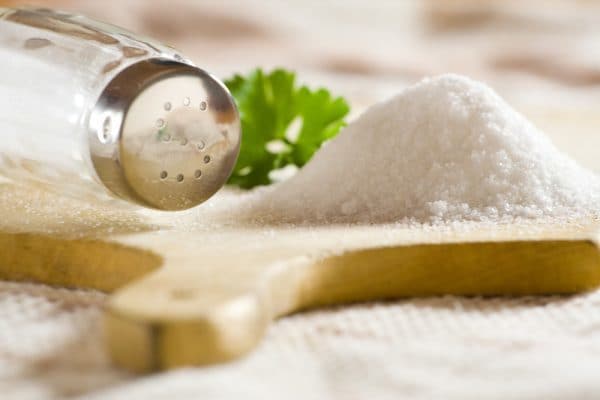
- Weight gain. Excessive salt consumption causes metabolic disorders, so the body processes incoming food more slowly, and as a result, the person gets better.
- Disruption of the functioning of important organs (kidneys, gall bladder and bladder). Too much salt every day can cause tissue dehydration over time.
- Malfunctions of the heart, problems with blood vessels. Excessive amounts of salt provoke an increase in fluid levels in the cells. Under the influence of this fluid, naturally, the blood cells swell, and at the same time they begin to put pressure on the vessels, provoking problems of the cardiovascular system, the development of hypertension, etc.
Similar articles:
Natural soy sauce
Natural soy sauce can be purchased at every supermarket. The seasoning has a spicy-vinegar aroma and a salty taste with a sweet aftertaste. The color of the sauce may vary between varieties, but all varieties have dark brown tones.
Composition of soy sauce
The composition of the sauce is quite simple - soybeans, purified water and ground barley. Soybeans are poured into a wooden or enamel container, then pre-roasted mealy barley, and all this is filled with liquid. A special starter is added to this mixture, which accelerates the fermentation state of the product. Then the vessel is tightly closed and placed in a dark place.
Soy sauce calories
Despite the very rich flavor bouquet, soy sauce has a fairly low calorie content - 45 kilocalories per 100 grams of product. Consuming this seasoning helps maintain protein levels in the body and is also fat-free. This fact did not go unnoticed by nutritionists, who rushed to include soy sauce in gentle diets.
Salt in soy sauce
The taste of soy dressing is quite rich and salty. Despite this, per 100 milliliters of natural sauce there is only 3.5 grams of salt. Interesting fact: given that the taste of the product changes depending on the fermentation period, the content of this component in soy sauce does not change.
What are the benefits and harms
13 Apr 2021
Just a few years ago, when our country was just discovering the joys of Japanese cuisine, almost all nutritionists recommended replacing our usual salt with the newfangled soy sauce. Today there are fierce debates about this. Let's try to figure out whether the sauce is good for our body.

Real soy sauce is a completely natural product.
The slightly viscous, dark-colored liquid is the result of a long fermentation process of soybeans under the influence of a special variety of mushrooms.
Although this cooking method takes quite a lot of time, technologically it is completely simple. The best soy sauce makers still use ancient methods and recipes.
Soy sauce is a real storehouse of various amino acids and antioxidants. These substances help our body cope with the constant attack of free radicals, which are the cause of diseases such as cancer and Parkinson's disease. They are also excellent helpers in the fight against infectious diseases.
Many nutritionists also talk about the benefits of natural soy sauce. It is relatively low in calories (only 70 kilocalories per 100 grams), so it is an excellent alternative to mayonnaise and fatty creamy sauces.
If you want to shed a few extra pounds, choose a low-sodium sauce. The less salt in the sauce, the less likely it is to retain excess fluid in the body.
And this, as is known, leads to a slowdown in metabolism and a gradual increase in body weight.

Unfortunately, buying the “right” soy sauce can be quite problematic. The modern food industry cannot keep up with the growing demand for food, so many ancient technologies are being simplified.
Most of the sauces that are available in our stores today bear little resemblance to traditional Asian seasoning. They are prepared either from a special concentrate or by using chemical components.
They contain many ingredients, the names of which are even difficult to read! Such sauces will definitely not benefit your body.
At the very beginning of the 2000s, an event occurred in the world known as the “soybean scandal.”
A study of the most popular soy sauces in the USA, Canada, Europe and Australia showed that their composition exceeded the permissible level of chloropropanol content many times over.
This substance is one of the strongest carcinogens! So when shopping, take a few minutes to read the label and choose the most natural product. This way you can enjoy the amazing taste of the sauce without harming your health.
But if abused, even the highest quality sauce can cause harm to the body. After all, it contains salt, and its excessive consumption has a detrimental effect on the functioning of all systems of our body.
This is the amount of sauce that will give your dish a piquant and slightly salty taste without harming your health.
- Package. The best soy sauces are always sold exclusively in glass bottles. Most often, sauces in plastic containers are surrogates.
- Label. If you see the inscription “made by natural fermentation,” then this is a quality product. Words such as “artificial” and “substitute,” on the other hand, should alert you.
- Color. Natural soy sauce is usually light brown in color. A dark brown or black color indicates a low-quality product. The best way to see the color of the sauce is in bright light.
Thus, moderate consumption of high-quality and natural soy sauce will not harm your health at all.
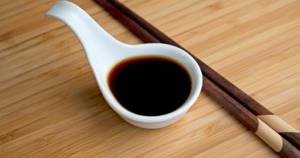
On the contrary, regular use of such a product and replacing salt and other harmful seasonings with it will help you not only lose a few kilograms, but also improve the functioning of many body systems.
The composition contains antioxidants that contribute to:
- strengthening the immune system;
- eliminating the causes of diarrhea;
- normalization of blood circulation;
- providing a therapeutic effect in cardiovascular diseases;
- combating degenerative pathologies of the nervous system.
In addition, niacin or vitamin B3 has a beneficial effect on the condition of the heart muscle and reduces the level of bad cholesterol in the blood.
Researchers at the University of Missouri conducted a clinical study looking for answers to the question of how soy sauce benefits women. During laboratory work led by the lead author of the scientific project, Professor Pamela Hinton, it was found that due to the presence of powerful phytoestrogens, the product is capable of:
- reduce the risk of developing postmenopausal osteoporosis;
- prevent the occurrence of breast cancer;
- prolong skin youth;
- delay the appearance of facial wrinkles;
- relieve painful menstruation;
- alleviate the symptoms of menopause.
Women over 35 years old are recommended to include soy sauce in their daily diet in small quantities.

University of Missouri (USA)
The benefits and harms of soy sauce for weight loss
The popularity of soy dressing is not limited to its bright taste. The sauce contains many important microelements for the body. Let's look at the benefits and harms of soy seasoning.
What are the benefits of soy sauce?
Due to its high protein content, soy sauce helps normalize digestion, which is especially important at the initial stage of the diet. The antioxidants contained in the product support the energy charge and tone of the body. This is especially true when giving up sweets, since a drop in blood glucose levels causes lethargy and weakness.
What is the harm of soy sauce to the body?
Despite the significant benefits of soy sauce during weight loss, it is still not worth classifying it as a “dietary elixir”. The use of this product is not recommended for people with diseases of the genitourinary system. Also, studies have shown that the seasoning has a negative effect on reproductive functions, especially in men.
soy sauce replaces salt, helps you lose weight and diversify your diet menu
Use in cooking
You're probably aware of how soy sauce is used in many Asian dishes and what it's usually eaten with, but it can be used in many more different (and delicious) ways. Here are just a few of them.
What do they eat with?
- Try cooking Chinese food at home. It's healthier than ordering it and a great opportunity to experiment with new ingredients in the kitchen. Soy sauce chicken is a great dish to start with.
- It balances out the flavor of the sweet and sour BBQ sauce.
- Add it to noodles or spaghetti by cooking mushrooms and onions with soy sauce.
- Try delicious grilled ribs in honey soy sauce.
- Crispy and slightly sweet, fried garlic shrimp in soy sauce tastes delicious and the recipe is so easy.
- Chicken wings in honey soy sauce are easier to make than you think. Find yellow wheat noodles to go with them in specialty Asian stores, or replace them with egg noodles.
- Your kids will love Soy Sauce Chicken Breast and you'll love that you're feeding them fresh, healthy food.
- Chicken in soy sauce in a frying pan or in the oven has an ultra-thin, crispy crust and super juicy meat.
- Fish in soy sauce is a quick and easy cooking method that does not require any special culinary skills. Try roasted salmon with brown sugar glaze with vegetables and rice.
The seasoning can be used both in its pure form and for preparing various Asian dishes. Soy sauce is especially in demand when serving sushi, rolls and maki. Various sauces are also prepared on its basis with the addition of:
- garlic;
- honey;
- tomato paste;
- mushrooms;
- shrimp;
- ginger;
- hot pepper.
It is suitable for meat and fish dishes, vegetables and flour products. It is used in the preparation of soba noodles, udon and funchose.
Is it possible to use soy sauce while on a diet?
Many diets prescribe the avoidance of salt, as it negatively affects the dynamics of weight loss and prevents the removal of excess fluid from the body. However, most people are not able to completely eliminate seasoning from their dishes, which leads to disruptions from their diet. In this case, soy sauce is a lifesaver.”
Rice diet with soy sauce
The mono-diet on rice is a fairly strict nutrition system. It consists of eating cereals cooked without salt and sugar. There should be no other dietary supplements, with the exception of soy sauce. It can be used to season rice for a richer taste. Please note that when using this seasoning as part of a mono-diet, it is necessary to increase the daily water intake.
Buckwheat diet with soy sauce
The buckwheat diet is a rather meager and monotonous nutritional system based on semi-cooked cereals, without adding salt or spices. This diet is quite strict, but effective. The diet allows the use of a small amount of soy dressing as a seasoning for buckwheat.
Soy sauce on a salt-free diet
A salt-free diet is a quick way to get rid of several kilograms in a short period of time. This process occurs due to the refusal of salt and the subsequent removal of excess fluid from the body. A salt-free diet can be “brightened up” with soy sauce, combining it with fresh vegetables and first courses.
Soy sauce on the Dukan diet
The Dukan diet is an “emergency” weight loss program. Despite the varied diet, the course prescribes the complete exclusion of sugar, salt and carbohydrates. To ease the load on a “stressful” body, it is allowed to consume soy sauce in the first half of the day, seasoning it with a salad of fresh vegetables. This way, you will not only brighten up the menu, but also reduce the risk of a dietary breakdown.
Nutritional value of tamari soy sauce per 100 g.
| Name | Quantity | Percentage of daily value, % |
| Carbohydrates | 4.8 g | |
| Sugar | 1.7 g | |
| Protein | 10.5 g | |
| Fats | 0.1 g | |
| Dietary fiber (fiber) | 0.8 g | 4 |
| Vitamin B6 | 0.2 mg | 16 |
| Calcium | 20 mg | 2 |
| Iron | 2.4 mg | 30 |
| Magnesium | 40 mg | 12 |
| Manganese | 0.5 mg | 25 |
| Phosphorus | 130 mg | 13 |
| Zinc | 0.4 mg | 3 |
| Copper | 0.1 mg | 7 |
| Selenium | 0.8 mcg | 2 |
| Thiamine | 0.1 mg | 4 |
| Riboflavin | 0.2 mg | 9 |
| Niacin | 4 mg | 20 |
| Folate | 18 mcg | 5 |
| Kholin | 38.4 mg | 7 |
Which soy sauce is better to choose?
Despite the simplicity and availability of ingredients, the cost of premium grade sauces is quite high. It's all about the fermentation period - the longer the soy seasoning is infused, and by the way, this figure can reach up to 4 years, the higher the value of the product. Cheap “analogues” of the seasoning contain carcinogenic substances, the addition of which speeds up the shelf life of the product. When choosing a sauce, pay attention to the composition - the presence of preservatives and additional substances is unacceptable. Natural soy spice must indicate the type of fermentation - “Live”.
Consumption of soy sauce should be in moderation. Otherwise, the product will not bring the desired effect to the body - changes in the acidity of the stomach will begin, followed by heartburn and flatulence. Therefore, at the slightest negative impact on health, you should consult a doctor and avoid dishes with soy sauce.
Sources:
https://polzaivredno.ru/chto-bolee-polezno-sol-ili-soevyj-sous/ https://fitexpert.biz/solit-ili-soevyj-sous-lit-chto-poleznee-dlya-cheloveka/ https: //mixfacts.ru/articles/kak-upotreblyat-soevyj-sous-pri-pohudenii-pravilno-polezno-li-ispolzovat-soevyj-sous-vmesto-soli
Appearance, taste and smell of the sauce
The classic dressing is a dark reddish-brown dense color with a glossy sheen. A color that is too dark indicates the hydrolyzed, unnatural nature of the liquid. The characteristic aroma is sweetish and strong, but pleasant, without any yeasty fermentation hint. Strong or unpleasant odors indicate chemicals added to improve the performance of the seasoning.
Soft and neat taste without excessive saltiness, burning or tingling in the mouth. The spicy, salty aftertaste is mixed with spicy and sweet notes. What you should pay additional attention to is the fluidity and density of the liquid. Excessively liquid consistency is a sign of dilution with water, and too thick consistency contains a large amount of stabilizers. The correct density of the dressing is medium thickness, evenly enveloping the pieces of food.
